1 Introduction
The purpose of this article is to provide an introductory technical overview of LoRa® and LoRaWAN™. Low Power Wide Area Networks (LPWAN) are expected to support a major part of the predicted billions of IoT devices. LoRaWAN™ is designed from the ground up, optimized for battery life, capacity, distance, and cost. An overview of the LoRaWAN™ specifications for different regions is provided, along with a high-level comparison of various technologies competing in the LPWAN space.
2 What is LoRa®?
LoRa® is a physical layer or wireless modulation used to establish long-range communication links. Many traditional wireless systems use Frequency Shift Keying (FSK) modulation as the physical layer because it is a very effective modulation for achieving low power consumption. LoRa® is based on linear frequency spread spectrum modulation, which maintains the low power characteristics similar to FSK modulation while significantly increasing communication distance. Linear spread spectrum has been used for decades in military and space communications due to its ability to achieve long communication distances and robustness against interference, but LoRa® is the first low-cost implementation for commercial use.
Long Range (LoRa®)
The advantage of LoRa® lies in its long-range capabilities technically. A single gateway or base station can cover an entire city or hundreds of square kilometers. At a given location, the range largely depends on the environment or obstacles, but LoRa® and LoRaWAN™ have a link budget superior to any other standardized communication technology. The link budget, typically expressed in decibels (dB), is the main factor determining distance in a given environment. Below is the coverage map of the Proximus network deployed in Belgium. With minimal infrastructure build-out, it is easy to cover the entire country.
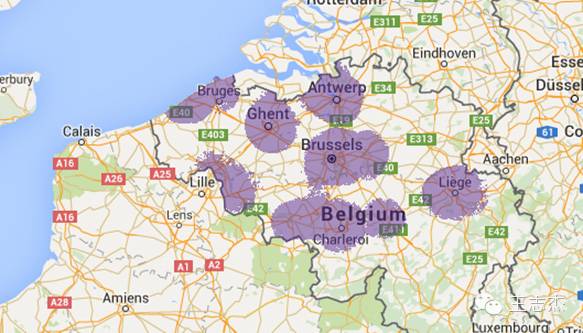
3 Where is LPWAN Suitable?
No single technology can meet all project applications and volumes for the Internet of Things. WiFi and BTLE are widely adopted standards that meet applications related to personal device communication very well. Cellular technology is well-suited for applications that require higher data throughput and are equipped with power. LPWAN offers years of battery life and is designed for sensors and applications that need to send small amounts of data a few times an hour over long distances from various environments.
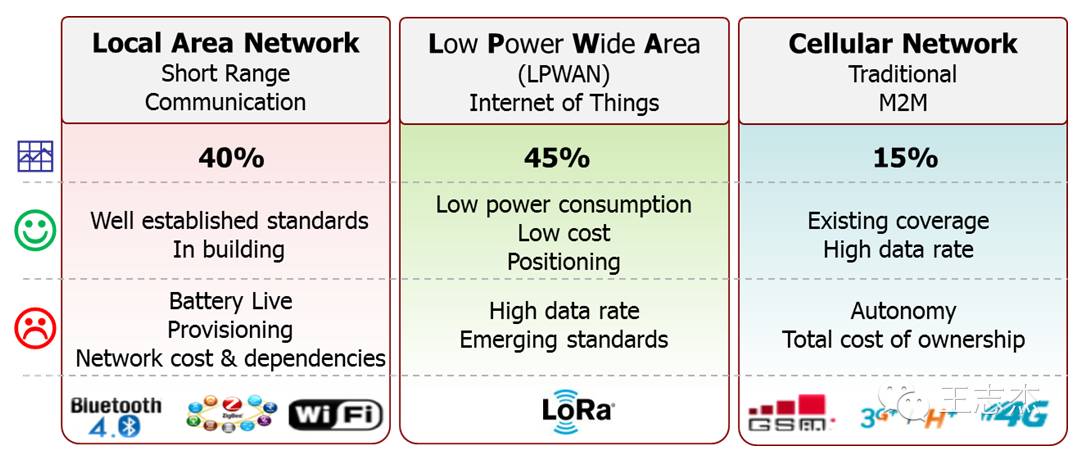
Key Factors in LPWAN
The most critical factors in LPWAN are:
-
Network Architecture
-
Communication Distance
-
Battery Life or Low Power
-
Robustness Against Interference
-
Network Capacity (Maximum Number of Nodes in the Network)
-
Network Security
-
Unidirectional vs Bidirectional Communication
-
Various Service Applications

4 What is LoRaWAN?
LoRaWAN™ defines the communication protocol and system architecture of the network, while the LoRa® physical layer enables long-distance communication links. The protocol and network architecture have the greatest impact on the battery life of nodes, network capacity, quality of service, security, and various application service qualities of the network.
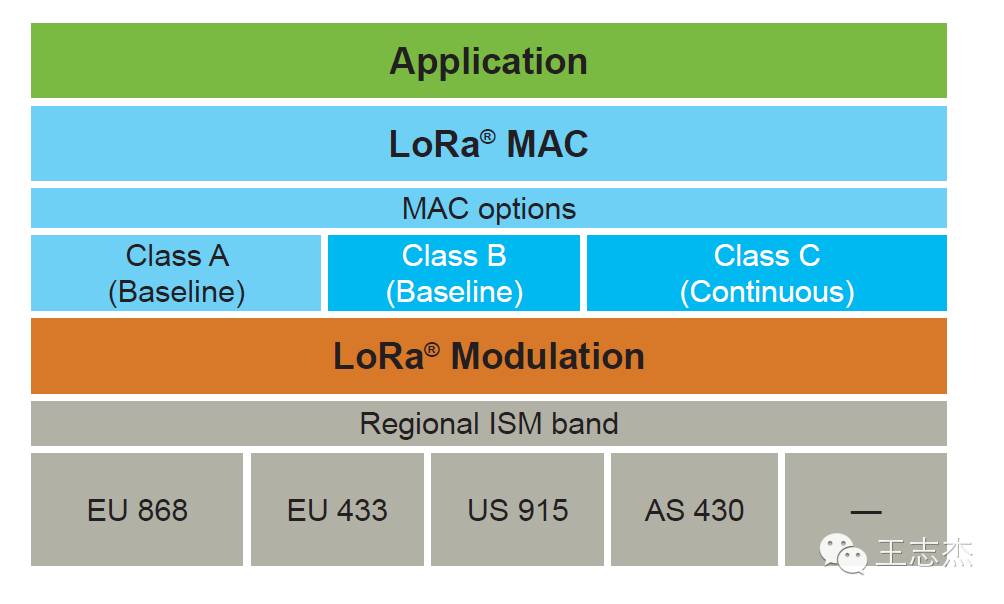
Network Architecture
Many existing deployed networks adopt a mesh network architecture. In a mesh network, individual terminal nodes forward information from other nodes to increase the communication distance and the size of the network area. While this increases range, it also adds complexity, reduces network capacity, and decreases battery life, as nodes may receive and forward information from other nodes that may not be relevant to them. When establishing long-distance connections, a long-distance star architecture is most meaningful as it preserves battery life.
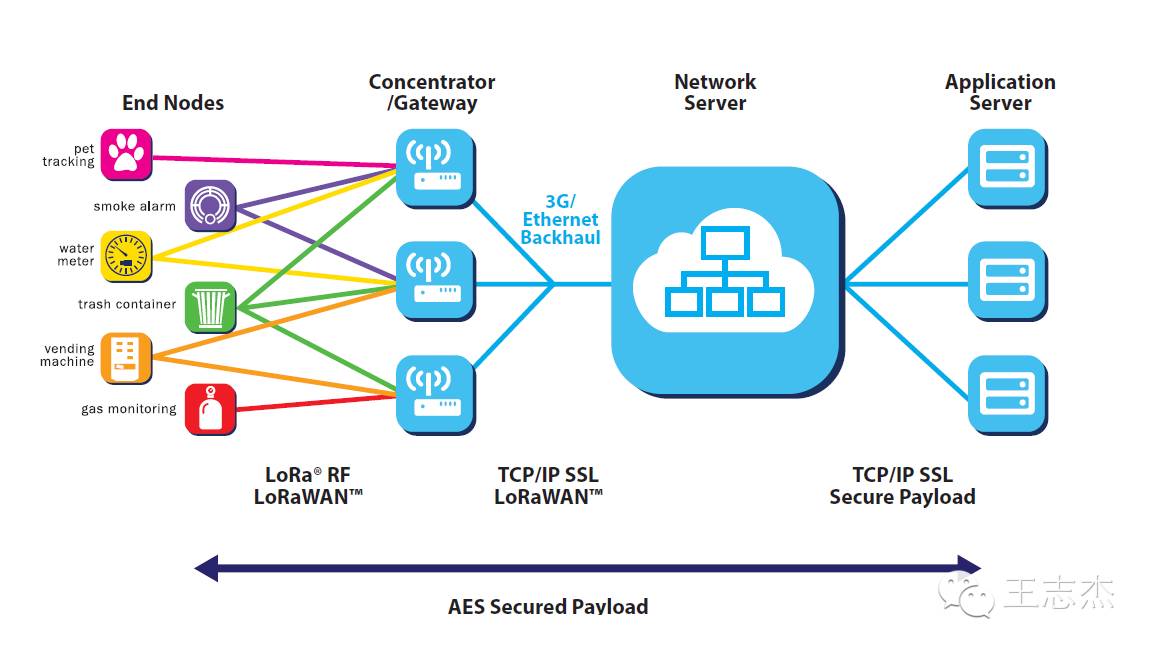
In a LoRaWAN™ network, nodes are not associated with dedicated gateways. Instead, the data transmitted by a node is typically received by multiple gateways. Each gateway forwards the data packets received from terminal nodes to cloud-based network servers over some backhaul (cellular, Ethernet, satellite, or Wi-Fi). Intelligence and complexity are placed on the server, which manages the network, filters redundant received data, performs security checks, schedules confirmations through the optimal gateway, and executes adaptive data rates. If a node is mobile or moving, the ability to not switch from gateway to gateway is an important feature that can be applied to asset tracking—a major target vertical application for IoT.
Battery Life
Nodes in a LoRaWAN™ network communicate asynchronously, sending data when it is ready, whether event-driven or time-scheduled. This type of protocol is commonly referred to as the Aloha method. In mesh or synchronous networks, such as cellular, nodes must wake up frequently to synchronize with the network and check for messages. This synchronization consumes energy significantly and is the primary driver of reduced battery life. In a recent study, GSMA compared various technologies in the LPWAN space, showing that LoRaWAN™ has 3 to 5 times the advantage over other technology options.
Network Capacity
For a long-distance star network to be feasible, gateways must have very high capacity or performance to receive messages from a large number of nodes. High network capacity is achieved through adaptive data rates and multi-channel multi-modulation transceivers in gateways, enabling messages to be received simultaneously across multiple channels. Key factors affecting capacity include the number of concurrent channels, data rates (air time), payload length, and how often nodes send data. Because LoRa® is based on spread spectrum modulation, signals are actually orthogonal to each other when different spreading factors are used. When the spreading factor changes, the effective data rate also changes. Gateways leverage this feature to receive multiple different data rates on the same channel at the same time. If a node has a good connection and is close to the gateway, there is no reason to always use the lowest data rate, as it takes longer to fill the available spectrum than what is needed. The higher the data transmission rate, the shorter the time in the air, allowing for more potential space for other nodes to transmit data. Adaptive data rates also optimize the battery life of nodes. For adaptive data rates to work, symmetric uplink and downlink capacity requirements must have sufficient downlink capacity. These features make LoRaWAN™ have very high capacity, making the network more scalable. The network can be deployed with minimal infrastructure, and when capacity is needed, more gateways can be added, data rates can be adjusted, and collisions can be reduced, allowing for a 6-8 times increase in network capacity. Other LPWAN technologies do not have the scalability of LoRaWAN™ due to technical trade-offs that limit downlink capacity and create asymmetry between downlink and uplink distances.
Device Classes – Not All Nodes Are the Same
Terminal devices serve different applications and have different requirements. To optimize various terminal application specifications, LoRaWAN™ uses different device classes. Device classes balance the network’s downlink communication latency with battery life. In control or actuator-type applications, downlink communication latency is an important factor.
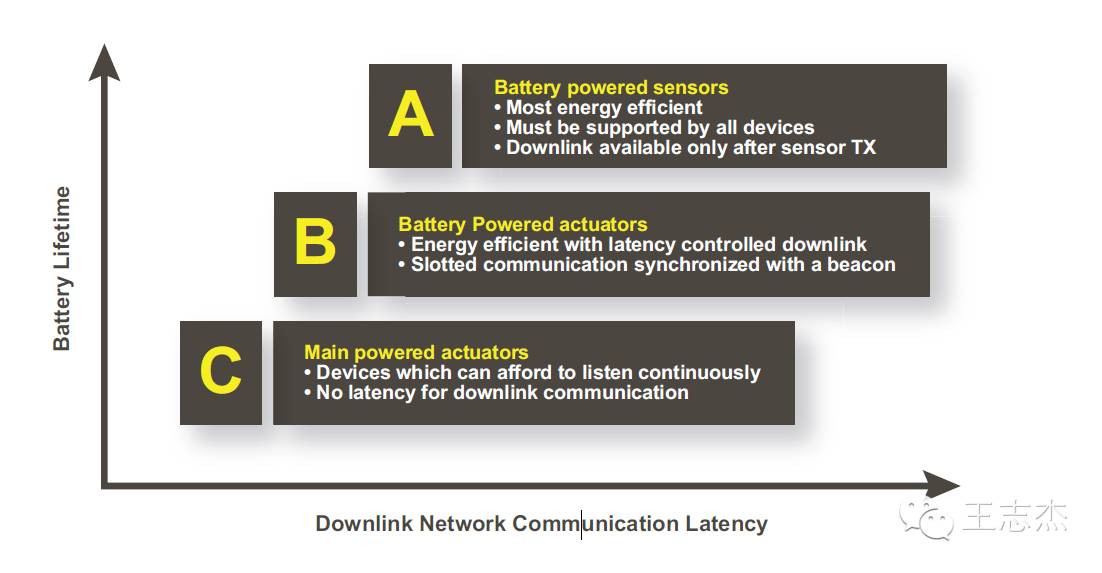
Bidirectional Terminal Devices (Class A): Class A terminal devices allow for bidirectional communication, so each terminal device’s uplink transmission is followed by two short downlink receive windows. The transmission time slots are scheduled by the terminal device based on its own communication needs with a slight variation based on random timing (ALOHA-type protocol). For applications that only require brief downlink communication from the server after a terminal device has sent an uplink transmission, this Class A operation is the lowest power terminal system. Any other downlink communication from the server must wait for the next scheduled uplink.
Bidirectional Terminal Devices with Scheduled Receive Time Slots (Class B): In addition to the Class A random receive window, Class B devices open additional receive windows at scheduled times. To allow the terminal device to open its receive window at scheduled times, it listens for gateway synchronization beacons once. This allows the server to know when the terminal device is listening.
Bidirectional Terminal Devices with Maximum Receive Time Slots (Class C): Class C terminal devices keep their receive windows almost continuously open, only closing when transmitting.
Security
Incorporating security is extremely important for any LPWAN. LoRaWAN™ uses two layers of security: one for network layer security and another for application layer security. Network security ensures the reliability of network nodes, while application layer security ensures that network operators cannot access end-user application data. Key exchange uses AES encryption with IEEE EUI64 identifiers. Each technology option has trade-offs, but LoRaWAN™ meets a wide range of potential IoT applications with its characteristics in network architecture, device classes, security, capacity scalability, and mobile optimization.
5 Overview of LoRaWAN™ Regions
The LoRaWAN™ specification varies slightly according to different regional spectrum allocations and regulatory requirements. Europe and North America have established LoRaWAN™ specifications, while other regions are still being developed by technical committees. Joining the LoRa® Alliance as a contributor member and participating in technical committees offers significant advantages for companies targeting solutions for the Asian market.
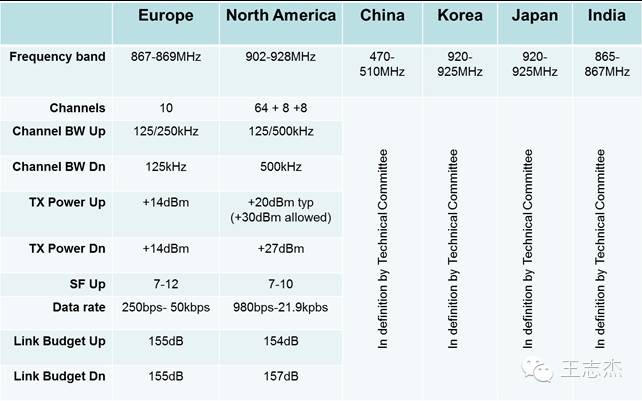
Europe LoRaWAN™
LoRaWAN™ defines 10 channels, 8 of which are multi-data rate channels ranging from 250bps to 5.5bps, one high data rate LoRa® channel at 11kbps, and one FSK channel at 50kbps. The maximum output power permitted by ETSI in Europe is +14dBM, except for the G3 band, which allows +27dBm. According to ETSI regulations, there are duty cycle limits, but no maximum transmission or channel dwell time limits.
North America LoRaWAN™
The North American ISM band is 902-928MHz. LoRaWAN™ defines 64 uplink channels at 125kHz increments from 902.3 to 914.9MHz. There are also 8 uplink channels at 500KHz increments from 903MHz to 914.9MHz. Eight downlink channels are 500kHz wide, starting from 923.3MHz to 927.5MHz. The maximum output power in the North American 902-928MHz band is +30dBm, but +20dBm is sufficient for most devices. According to FCC regulations, there are no duty cycle limits, but each channel has a maximum dwell time limit of 400 milliseconds.

North America LoRaWAN™ Hybrid Mode
Most people are familiar with the FCC’s frequency hopping requirements, which require the use of more than 50 equal channels in the ISM band. LoRaWAN™ defines more than 50 channels to utilize the available spectrum, allowing for maximum output power.
LoRa® modulation, as a digital modulation technology, does not have to adhere to all the frequency hopping requirements specified by the FCC under hybrid mode operations. In hybrid mode, the maximum output power is limited to +21dBm, using only a subset of 8 channels from the 64 uplink channels.
From the FCC:
“In a hybrid system using both digital modulation and frequency hopping on the same carrier at the same time. As illustrated in Section 15.247(f), when the frequency hopping function is off, the hybrid system must comply with the 8dBm power density standard in any 3kHz band. When the frequency hopping function is on, transmissions must also comply with a maximum dwell time of 0.4 seconds/channel. This type of hybrid system is not required to adhere to the usual minimum bandwidth requirement of 500kHz associated with a DTS transmission. Additionally, there is no specified minimum number of hopping channels associated with this type of hybrid system.
6 Comparing LPWAN Technology Options
There are many activities comparing LPWAN options in the IoT space from both technical and business model perspectives. LPWAN networks are now being deployed because there are strong business cases to support immediate deployment, and the costs of deploying networks in unlicensed frequency bands can be less than even 3G software upgrades. To compare different LPWAN technologies, the questions to be answered include:
-
Flexibility for various large-scale applications
-
Is the communication protocol secure?
-
Technical aspects — distance, capacity, bidirectional communication, robustness against interference
-
Network deployment costs, BOM costs for terminal nodes, battery costs (the largest contributor to BOM)
-
The ecosystem of solution providers offers flexible business models
-
Available terminal products ensure ROI for network deployment
-
The advantages of the ecosystem ensure quality and longevity of solutions
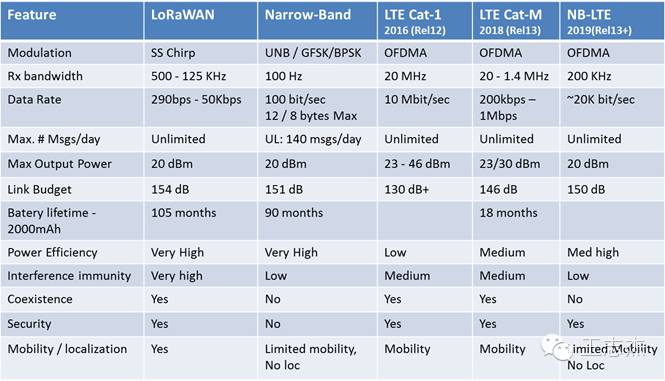
7 LPWAN Cost Comparison with Traditional Systems
LoRaWAN™ shows significant cost savings in deployment and required infrastructure compared to existing systems. Below is an analysis conducted by Talkpool, which has extensive experience in deploying WMBus and LoRa-based solutions.
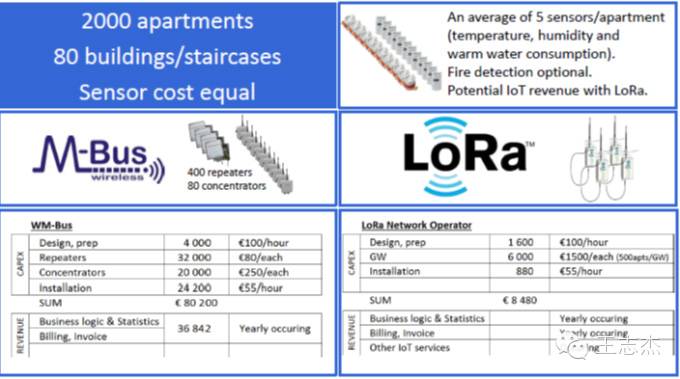
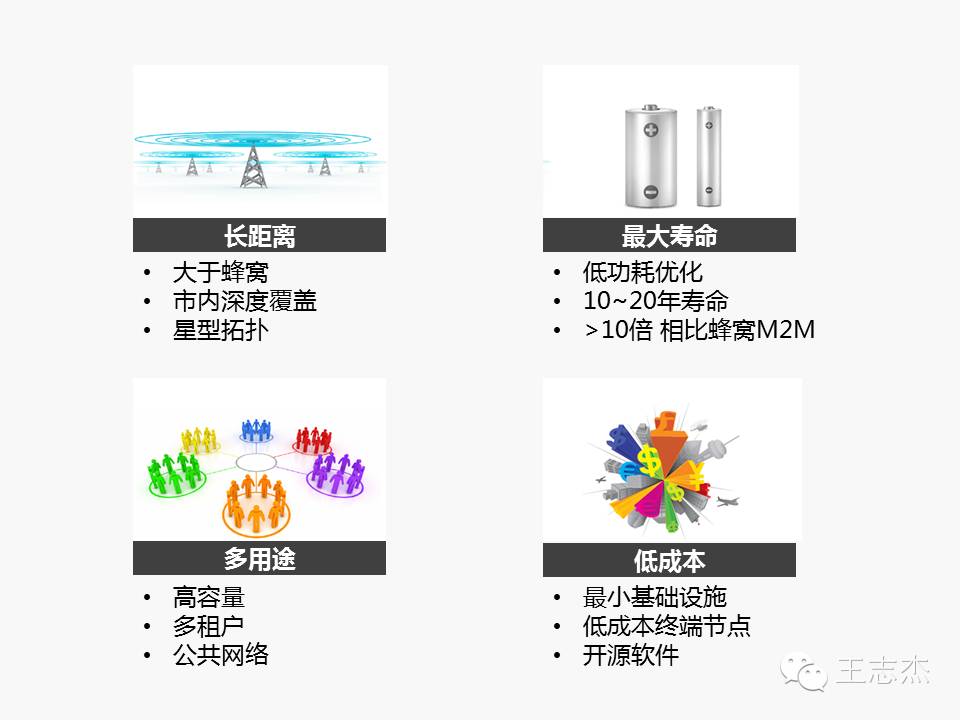
For more information, please follow the “Chip Information” public account
Chip Information Public Account: icwangzhijie
Subscribe: Scan the QR code below to follow the Chip Information public account (or, long press the QR code image below, select “Recognize the QR code in the image” from the pop-up menu, and click to follow)
